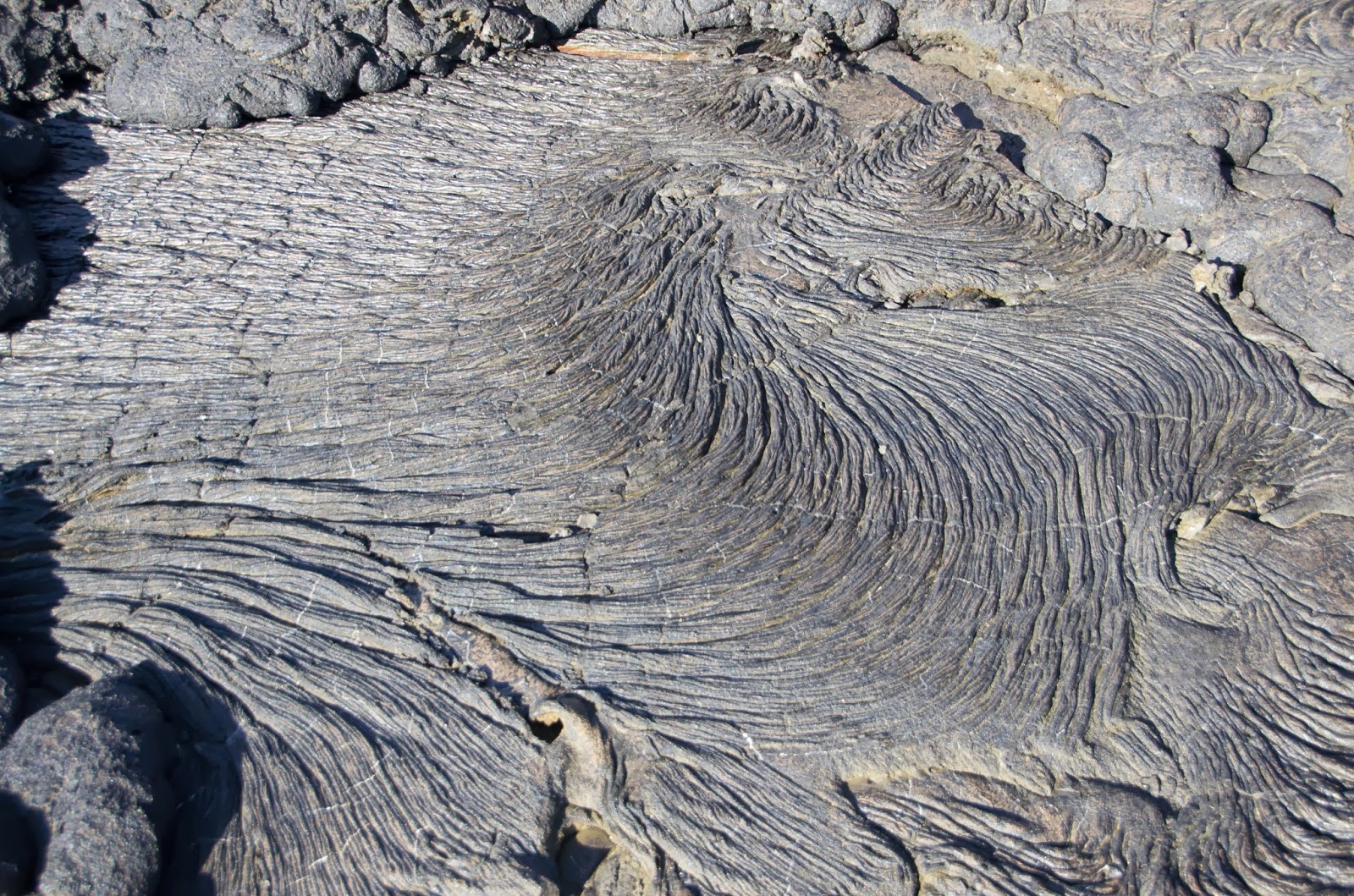 |
| Dolphins in the distance |
Our first land stop on the islands would be at Sullivan Bay
on Santiago Island. We thus began our visit with one of the premier lava spots.
The extensive lava flows here are from the last quarter of the 19th
century. The Pahoehoe lava flows,
found only here and Hawaii, solidified to look like corrugated cardboard or an
accordion. The rough terrain thwarted Linda’s attempt to join the walk so she
stayed by the shoreline with some water and her camera. She did get a good
sense of what the lava is like even from that limited vantage point and was
still able to see the lava heron, Sally Lightfoot crabs and the finches.
 |
| Probably the remains of a tree consumed by the molten lava |
 |
| Oven Lava |
 |
| Lava Cactus - one of the pioneer plants |
 |
| Another pioneer plant |
On the walk we got some good close-up views of the patterns
the lava left as it solidified. One interesting phenomenon was the oven lava
formed when an air bubble gets trapped forming a tube or ball which cools
before it opens. We also saw the remains of a tree that had been consumed as
the lava flowed down the slopes to the ocean. Without soil, the vegetation is
sparse with only some small brush and lava cactus beginning to grow. Over the
next million years or so, these struggling plants will create enough new dirt
to host less hardy plants and the lava will begin to disappear.
 |
| Sally Lightfoot Crab |
 |
| Lava Lizard |
 |
| Lava Heron |
 |
| Small Ground Finch |
On our panga ride back to the boat, we passed an area used
by the US military to practice bombing runs during World War II. Our panga
group has been with the ship for three days already and pointed out the trail
they took to the top of one of the hills to get some greater views of the
island. Later they talked about visiting a bird nesting area where they were
able to walk within six feet of nesting frigatebirds. It’s hard not to be a bit
jealous of that even knowing we will see some other sights and it just gives us
a good reason to come back.
 |
| Bombing Practice During WWII |
 |
| One of the few other ships we saw. |
 |
| Trail up the mountain |







No comments:
Post a Comment